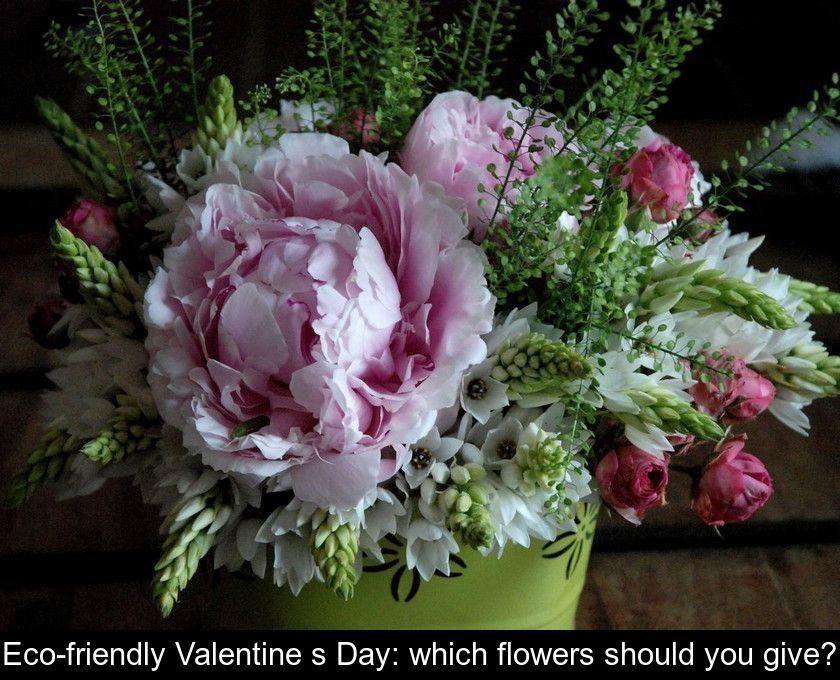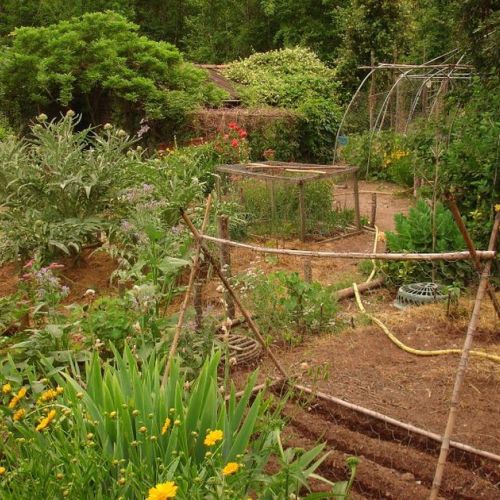Eco-friendly Valentine's Day: Which Flowers Should You Give?
If your significant other is eco-conscious, avoid giving her roses for Valentine's Day! At this time of the year, these flowers that symbolize love come from very far away and have a disastrous carbon footprint. We'll explain which flowers to give to celebrate Valentine's Day in an eco-friendly way.
Avoid the roses.
While Valentine's Day brings joy to florists, the planet isn't really celebrating! For the lovers' holiday, roses are logically among the most sold flowers, but their production and transportation have significant environmental impacts.
Each year, for February 14th, the rose is THE quintessential flower of love. It accounts for 58% of flower sales for Valentine's Day, with about 22 million bouquets sold in France. But did you know that these flowers usually come from (very) far away? Nearly two-thirds of the roses sold in France are grown abroad, mainly in Kenya, Ethiopia, or South America.
Before reaching the florists, they therefore make a long journey by plane, which inevitably increases their carbon footprint. According to figures from Novethic, a bouquet of 25 roses pollutes as much as a 20 km car ride! It's also worth noting that growing roses requires large amounts of water. Again, according to Novethic, it takes between 7 and 30 liters of water to grow a single rose.
Finally, according to an investigation by 60 million consumers, these flowers contain a cocktail of chemical substances harmful to the environment. That's quite a bunch! For all these reasons, if your Valentine cares about preserving the environment, you must absolutely avoid roses and offer her other flowers as a token of your love.
Prefer local flowers
In France, roses do not grow in winter. That's why those offered for Valentine's Day usually come from abroad. If you find "grown in France" roses in February, be aware that these flowers have been grown in greenhouses heated and illuminated day and night! Therefore, their carbon footprint is catastrophic.
To give a truly eco-responsible bouquet of flowers for Valentine's Day, you will have to give up roses and choose seasonal flowers instead.
Fortunately, even in February, you have plenty of choices between camellias, tulips, ranunculuses, anemones, amaryllis, or mimosa for example. Ranunculuses are a very good option because there are several varieties, and the Hanoi ranunculus looks just like a rose! Anemones also have a charming appeal with their black heart and petals as soft as velvet... Poet's carnations combine simplicity and longevity as they last at least 10 days in their vase.
Where to find flowers made in France?
To ensure that these seasonal flowers have indeed been grown in France, look for the following labels:
=> The "Fleurs de France" label, created in 2017, distinguishes flowers and plants exclusively cultivated in France by horticulturists and nurserymen committed to an eco-responsible approach.
=> The "Plante Bleue" label guarantees flowers produced by French companies, following environmentally friendly practices: optimization of watering, low use of fertilizers, reduction of treatments, energy savings, waste recycling, and respect for fauna and flora...
=> The "Label Rouge" rewards certain varieties of roses, dahlias, Geraniums, and even Christmas trees!
Note also that some online stores commit to selling exclusively seasonal flowers from French production. This is the case with online stores like "Fleurs d'Ici, Monsieur Marguerite, Bergamotte or Lilas Rose".
The trend of local and seasonal flowers is blooming in France, as evidenced by the association "Le Collectif de la fleur française" (link below). This association was created in 2017 to promote Slow Flower (a mode of flower production that is local and committed, inspired by the Slow Food movement for food).
It offers an online directory listing 130 florists who use at least 50% French, local, and seasonal flowers.
Now, you have no more excuses if:
1- you forget to offer flowers for Valentine's Day.
2- you offer a bouquet that comes from the other side of the world!













